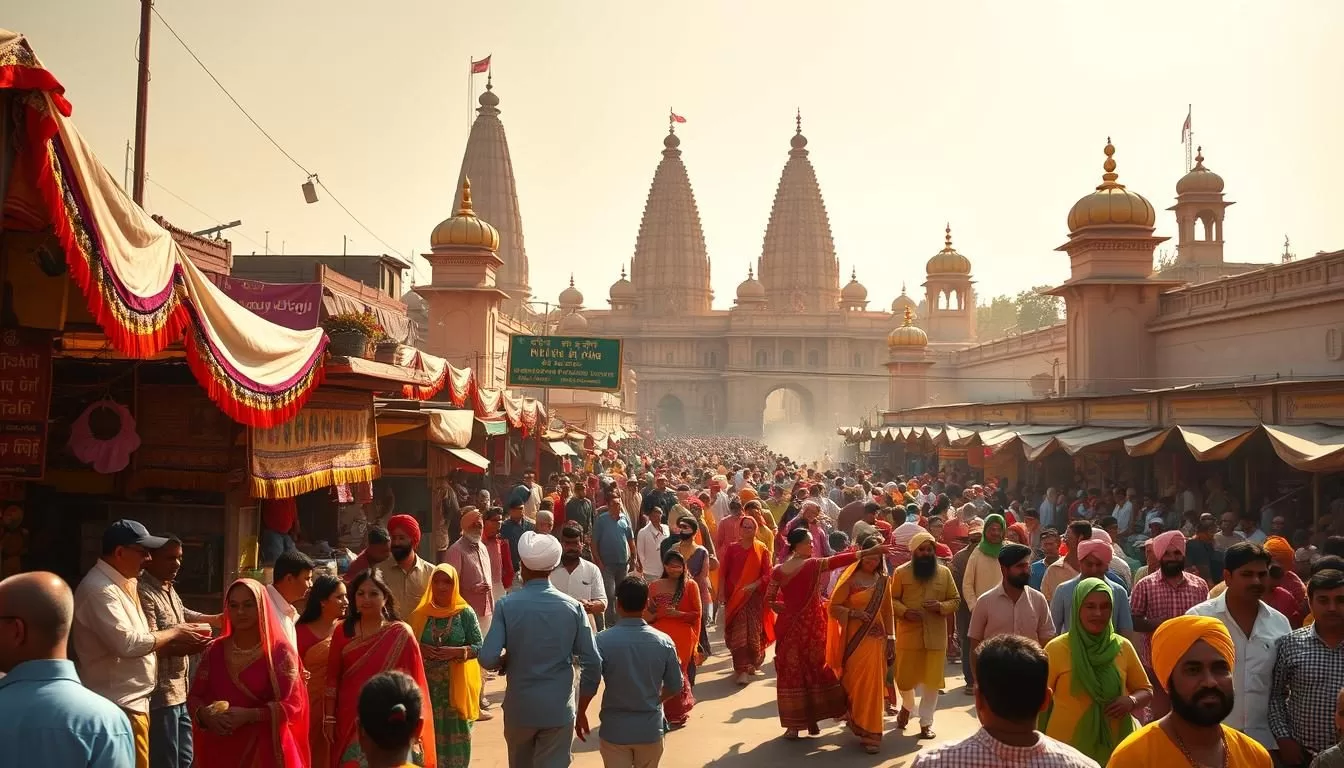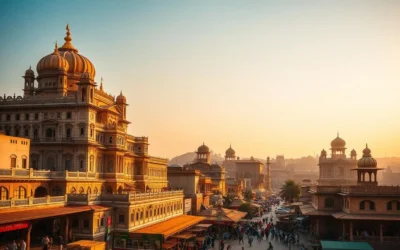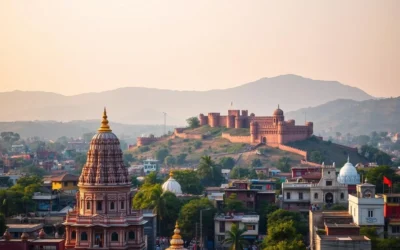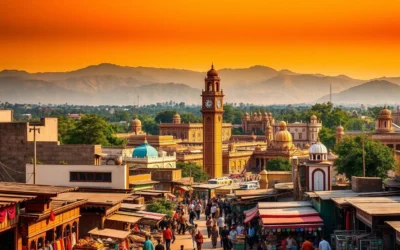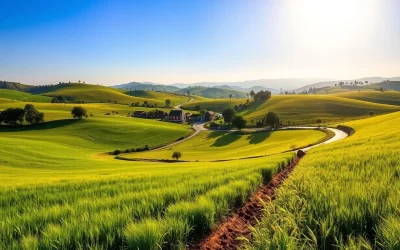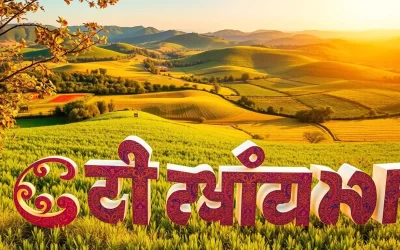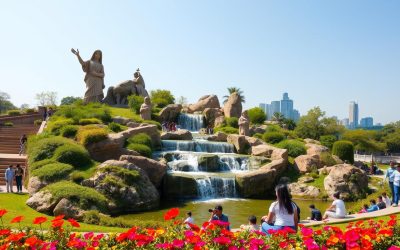✓ Accommodations✓ Flights✓ Rental Cars
Welcome to the vibrant land of Punjab, where festivals are not just events but a way of life that brings communities together in joyous celebration.
You’ll discover that Punjab’s festivals offer a unique window into the rich cultural tapestry of this region, showcasing traditions that have been passed down through generations.
From the harvest celebrations of Baisakhi to the bonfire festival of Lohri, each festival offers its own unique traditions, foods, and cultural experiences, making Punjab a must-visit destination for any traveler seeking an authentic cultural experience.
The Vibrant Cultural Tapestry of Punjab
As you explore Punjab, you’ll discover a rich cultural heritage that’s deeply intertwined with its vibrant festivals. Punjab’s traditional celebrations are a vibrant reflection of its customs and values, with each festival infused with unique rituals passed down through generations.
The Significance of Festivals in Punjabi Life
Festivals in Punjab are deeply woven into the fabric of everyday life, serving as important markers of time and tradition throughout the year. These celebrations reflect the agricultural cycles that have historically defined life in this fertile region, with many festivals coinciding with planting and harvest seasons.
For Punjabis, festivals are not just occasions for merriment but also opportunities to strengthen community bonds, pass down cultural knowledge to younger generations, and express gratitude for life’s blessings. The significance of these celebrations extends beyond religious observance, embodying shared values of hospitality, generosity, and joy that characterize Punjabi culture.
Seasonal Festival Calendar: When to Visit
When planning your visit to Punjab, you’ll want to consult the seasonal festival calendar to align your trip with these vibrant cultural experiences. The winter months (November to March) are particularly rich with celebrations, including Lohri, Maghi, and Hola Mohalla, each offering unique insights into Punjabi traditions.
| Season | Festivals | Highlights |
|---|---|---|
| Winter (Nov to Mar) | Lohri, Maghi, Hola Mohalla | Bonfires, traditional dances, martial arts displays |
| Spring (Mar to Apr) | Baisakhi | Harvest festival, processions, traditional foods |
| Summer/Monsoon (Jul to Aug) | Teeyan | Women’s festival, traditional dances, cultural events |
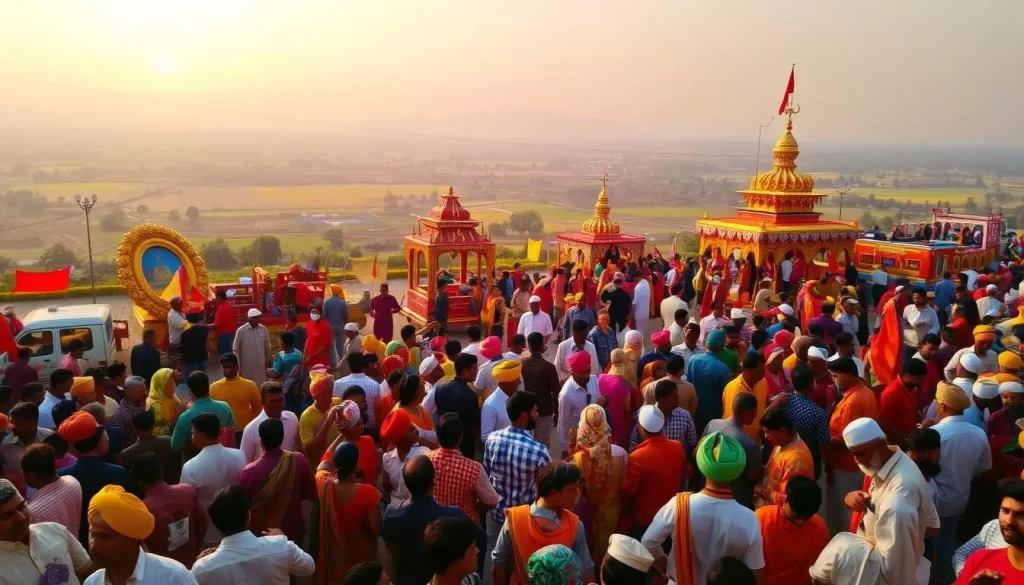
Lohri: The Bonfire Festival of Joy
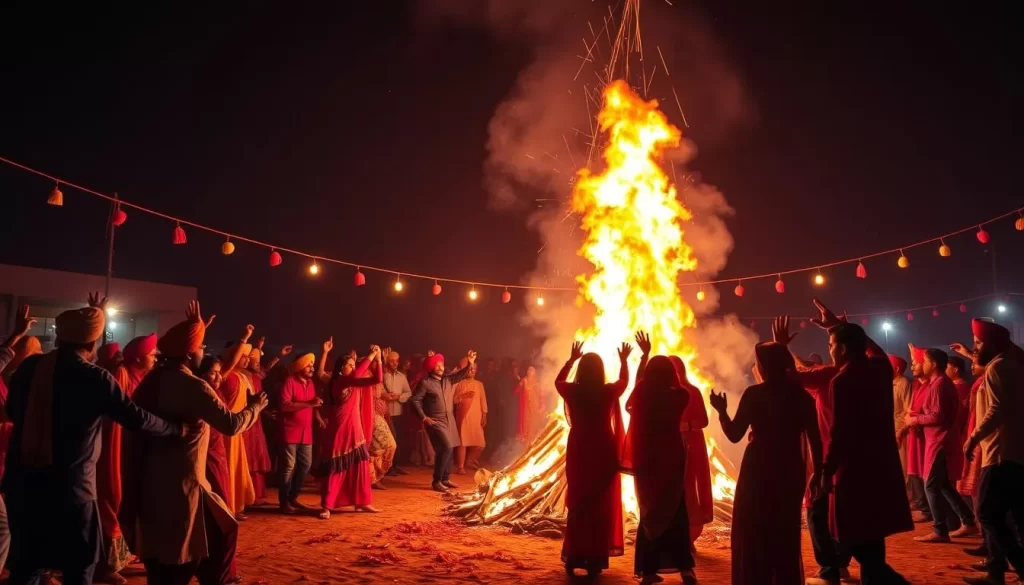
The night sky is lit ablaze with bonfires as Punjab celebrates Lohri, a festival that heralds the end of winter. This joyous occasion is marked on January 13th each year and signifies the beginning of the harvest season, symbolizing warmth and new beginnings.
Origin and Significance
Lohri has deep roots in Punjabi folklore, with stories associated with its origin, including tales of the folk hero Dulla Bhatti who rescued girls from slavery. The festival holds special significance for newly married couples and families with newborn children, who are often honored guests at Lohri celebrations.
Celebrations and Traditions
When you attend a Lohri celebration, you’ll witness the central ritual of the bonfire, around which people gather to sing traditional folk songs and perform energetic dances like Bhangra and Gidda. Participants circle the fire, throwing sesame seeds, jaggery, and popcorn into the flames as offerings while singing “Sundar Mundariye” and other traditional Lohri songs.
Traditional Foods and Sweets
The festival is a feast for your taste buds too, with special Lohri foods including rewri (sesame seed brittle), gajak (peanut brittle), and makki di roti (cornbread) served with sarson da saag (mustard greens). These traditional foods are not just delicious but also seasonally appropriate, providing warmth during the cold winter months.
Baisakhi: Celebrating the Harvest Season
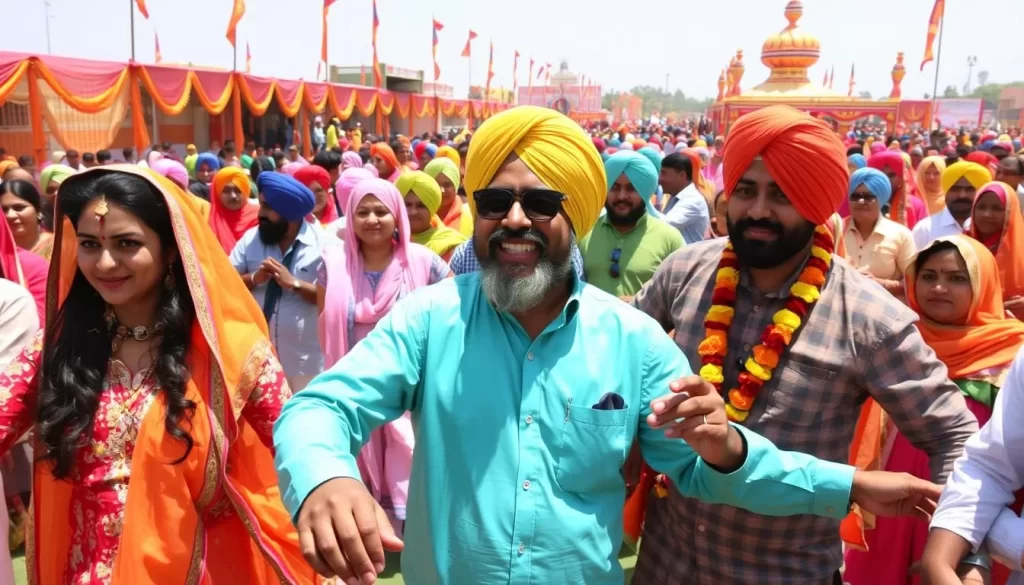
Punjab comes alive with the arrival of Baisakhi, a joyous celebration marking the harvest season and the Sikh New Year. This significant festival, usually observed on April 13th, is a time of thanksgiving for the bountiful crops and holds deep cultural and religious significance for the Sikh community.
Historical and Religious Significance
Baisakhi commemorates the formation of the Khalsa Panth by Guru Gobind Singh in 1699, marking a pivotal moment in Sikh history. It’s a day of spiritual renewal, where devotees visit Gurudwaras, participate in prayers, and engage in community service.
Festivities and Processions
The celebrations are characterized by vibrant processions known as Nagar Kirtan, led by the Panj Pyare (Five Beloved Ones), accompanied by devotional music and displays of Gatka, a traditional Sikh martial art. The atmosphere is filled with joy, traditional music, and the sight of colorful attire.
Must-Try Baisakhi Delicacies
No Baisakhi celebration is complete without indulging in traditional delicacies. You can savor kada prasad, a sweet offering, and langar meals featuring chole (chickpea curry). Seasonal treats like jalebi and lassi are also a must-try.
The festival is a testament to Punjab’s rich cultural heritage, where people from all walks of life come together to celebrate the harvest and the Sikh New Year. The community spirit, traditional dances like Bhangra and Gidda, and the delicious food make Baisakhi a truly unforgettable experience.
Hola Mohalla: A Display of Sikh Martial Arts
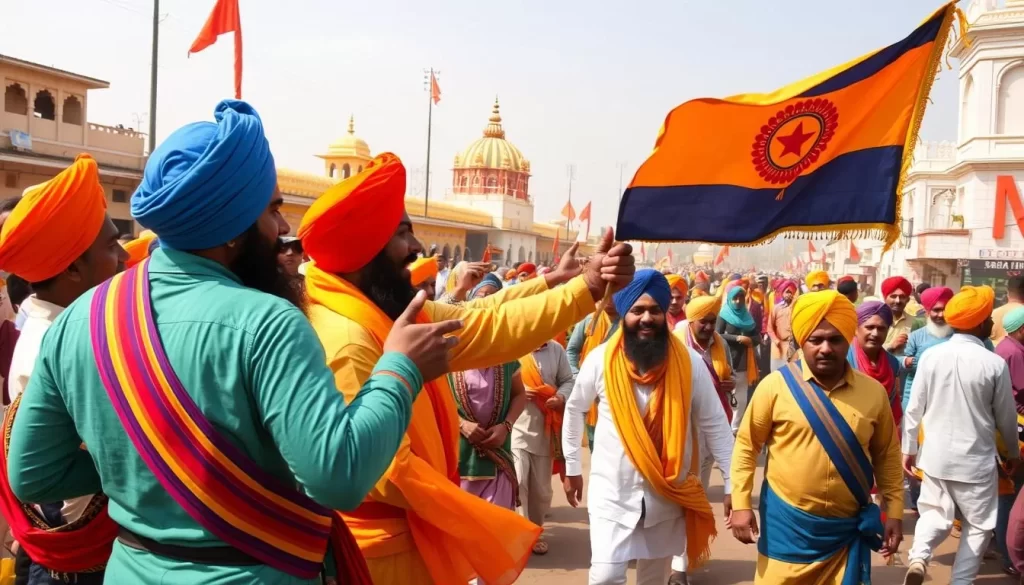
Hola Mohalla, a unique festival established by Guru Gobind Singh, showcases the martial spirit and rich cultural traditions of Punjab. Celebrated in March, typically a day after Holi, this event transforms the serene town of Anandpur Sahib into a vibrant arena of traditional sports and artistic expressions.
The Origin Story
Guru Gobind Singh Ji, the tenth Sikh Guru, established Hola Mohalla in the 18th century as a day for Sikhs to display their martial skills and celebrate their faith. This historical context is crucial in understanding the significance of the festival.
Martial Displays
During Hola Mohalla, you can witness breathtaking demonstrations of Gatka (traditional Sikh martial art), horseback riding, sword fighting, and archery by Nihang Sikhs. These martial displays are not just performances but competitions that showcase techniques preserved and passed down through generations.
Experiencing the Spirit
Beyond the martial aspects, you’ll experience the spiritual dimension of Hola Mohalla through kirtan (devotional music), poetry recitations, and community prayers. The festival grounds become a temporary city with thousands of pilgrims and visitors, where you can partake in the langar (community kitchen) that serves free meals to all.
Teeyan: The Women’s Festival of Monsoon
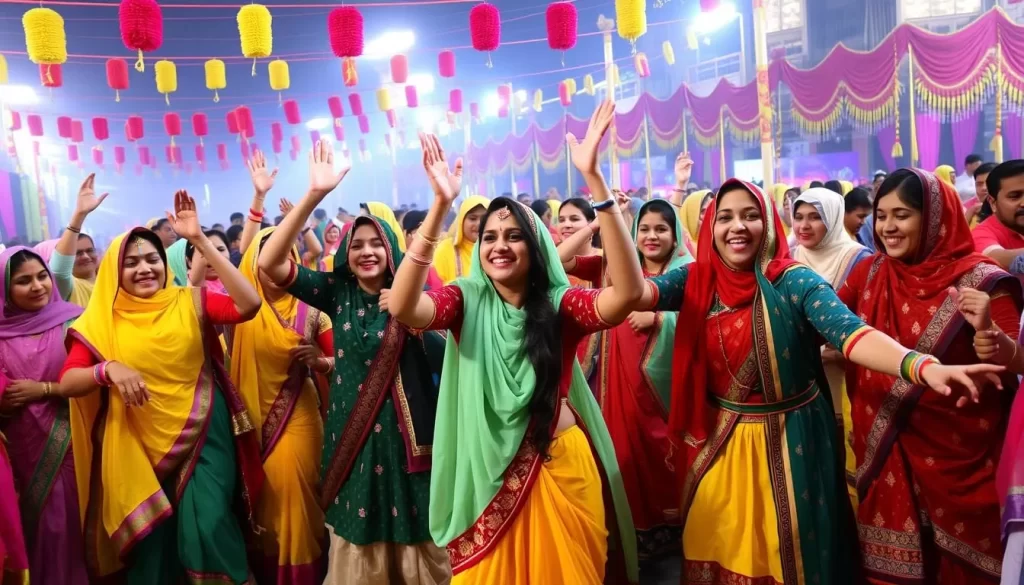
As the monsoon rains sweep across Punjab, the vibrant festival of Teeyan comes alive, celebrating the strength and spirit of women. This lively occasion is marked by traditional songs, folk dances, and vibrant gatherings, creating an atmosphere filled with joy and camaraderie.
Celebrating Womanhood and Sisterhood
Teeyan is a vibrant festival that places women at the center of the celebration, honoring their roles, relationships, and creative expressions. When you visit Punjab during this time, you’ll see married women returning to their parents’ homes for the festival, creating joyful reunions and strengthening family bonds across generations.
Traditional Dances and Activities
The highlight of Teeyan is the Gidda dance, where women showcase their skills in lively movements and clapping. You’ll be charmed by the sight of colorfully dressed women gathering in open spaces, gardens, and courtyards, creating a spectacular visual display of traditional Punjabi attire.
During Teeyan, women also engage in swing-riding (peenga), singing traditional songs while swinging—a practice believed to please the rain gods. The festival coincides with the arrival of monsoon rains, symbolizing fertility and renewal, themes that resonate throughout the celebrations.
Gurupurab: Celebrating Sikh Gurus’ Birthdays
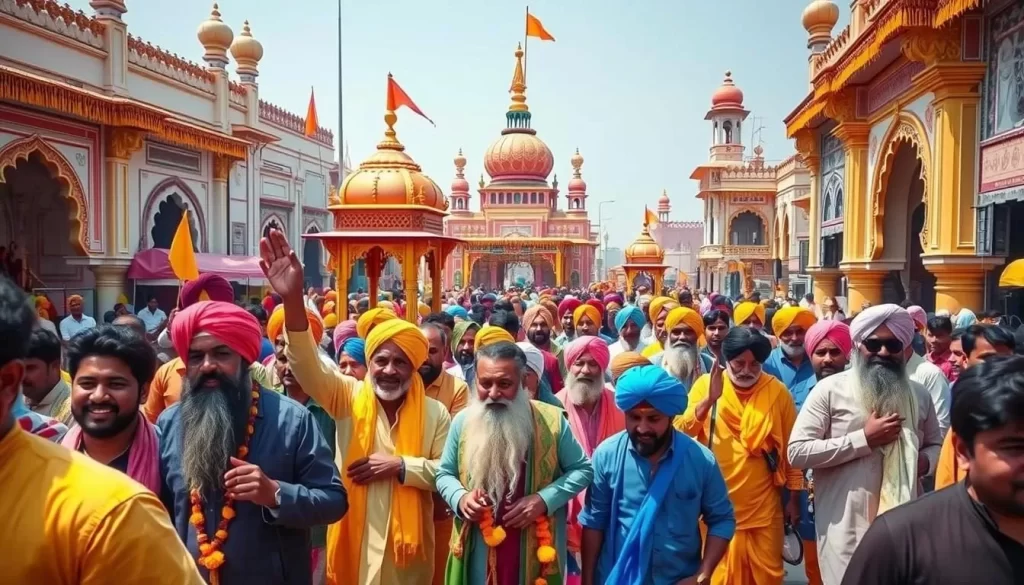
Gurupurab is a significant festival in Punjab, marking the birthdays of the revered Sikh Gurus. It’s a time of great spiritual significance, celebrated with devotion and grandeur across the state.
Religious Significance and Traditions
The festival honors the birth anniversaries of the ten Sikh Gurus, with Guru Nanak Dev Ji’s and Guru Gobind Singh Ji’s birthdays being the most widely celebrated. The celebrations begin before dawn with Asa-di-Var, followed by Katha and Kirtan throughout the day.
Community Feasts and Processions
The Nagar Kirtan processions are a highlight, featuring the Guru Granth Sahib carried on a decorated palanquin, accompanied by devotional music and martial arts displays. Community feasts, or Langar, serve thousands, embodying the Sikh principles of equality and selfless service.
Punjab, India: Top Festivals to Check Out When Visiting
As you plan your visit to Punjab, India, you’ll want to experience the state’s vibrant festival calendar, which showcases its rich cultural heritage. Punjab is known for its numerous festivals that take place throughout the year, each offering a unique glimpse into the state’s history, culture, and traditions.
Diwali: The Festival of Lights with a Punjabi Twist
Diwali, the Festival of Lights, is celebrated with immense enthusiasm in Punjab, illuminating homes and hearts alike. This festival symbolizes the victory of light over darkness and good over evil. In Punjab, Diwali is marked by vibrant decorations, the lighting of diyas (oil lamps), and the bursting of fireworks, creating a magical atmosphere. For Sikhs, Diwali is also celebrated as Bandi Chhor Divas, commemorating the release of Guru Hargobind Ji from imprisonment in 1619.
Maghi Mela: The Winter Fair
Maghi Mela, held on January 14th in Muktsar, is a vibrant fair that celebrates the harvest season and the festival of Maghi. This event attracts thousands of visitors who come to experience the rich cultural heritage of Punjab. The fair combines solemn remembrance with cultural celebrations, featuring wrestling competitions, agricultural exhibits, and handicraft displays.
Basant Panchami: Welcoming Spring
Basant Panchami, celebrated in January or February, marks the arrival of spring and is dedicated to Goddess Saraswati, the deity of knowledge and arts. The festival is characterized by the blooming of mustard fields, painting the landscape in shades of yellow. People dress in yellow attire and fly colorful kites, symbolizing the awakening of nature from winter.
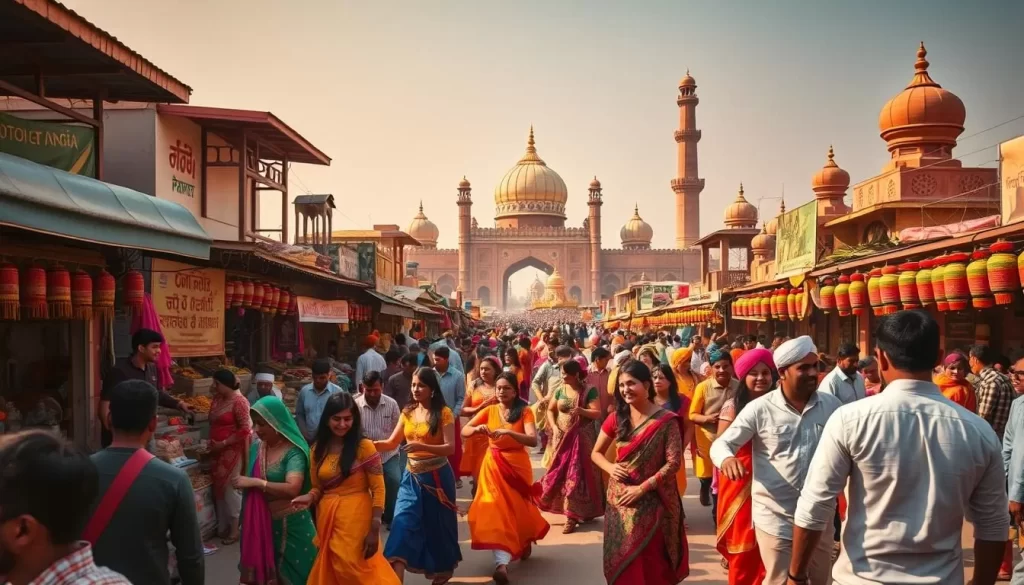
These festivals offer you a chance to experience the rich cultural tapestry of Punjab throughout the calendar year. Each festival has its unique traditions, foods, and celebrations, making Punjab a great destination for festival tourism.
Lesser-Known but Equally Fascinating Festivals
Punjab’s vibrant cultural heritage is reflected in its numerous festivals, many of which remain off the beaten path. While the state’s major celebrations are well-known, there are several lesser-known festivals that offer a unique glimpse into the local traditions and community life.
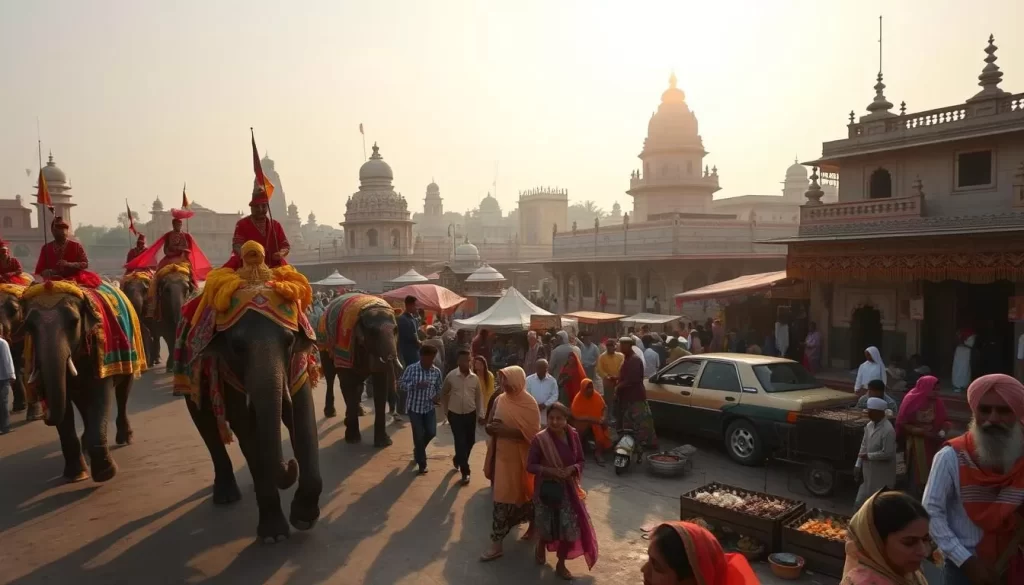
Karwa Chauth: Celebrating Marital Bonds
Karwa Chauth is a significant festival celebrated by married women in Punjab, where they fast from sunrise to moonrise for the longevity and well-being of their husbands. The festival is marked by beautiful rituals, including women dressing in their finest clothes and bridal finery, applying intricate henna designs, and gathering to perform ceremonial prayers.
The festival has evolved over time, with husbands often participating by fasting alongside their wives or presenting them with special gifts, thus strengthening the marital bond.
Chappar Mela: The Cultural Fair
Chappar Mela is a spectacular festival held in the village of Chappar in Ludhiana district, typically taking place in September. Originally a snake worship ritual, it has evolved into a major cultural fair featuring folk performances, rural sports competitions, and a vibrant marketplace where visitors can purchase traditional handicrafts and sample regional delicacies.
Jor Mela and Tikka: Religious Commemorations
Jor Mela, held in December at Fatehgarh Sahib, commemorates the martyrdom of Guru Gobind Singh’s younger sons. The three-day commemoration includes continuous reading of the Guru Granth Sahib, devotional music, and processions that attract thousands of pilgrims. Additionally, the tradition of Tikka, where sisters apply a ceremonial mark on their brothers’ foreheads, praying for their prosperity and protection, is another beautiful aspect of Punjabi culture.
These lesser-known festivals provide a unique opportunity to experience authentic Punjabi traditions, away from the larger tourist crowds, and offer deeper insights into the cultural fabric of everyday life in Punjab.
Culinary Delights During Punjabi Festivals
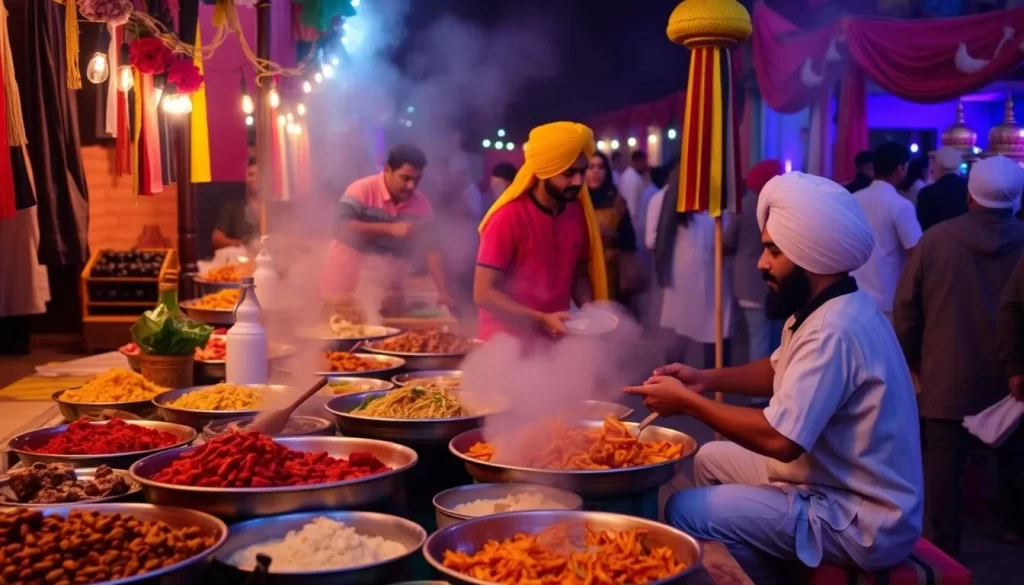
The essence of Punjabi festivals lies in their culinary delights, which are deeply rooted in the region’s traditions and seasonal produce. Each celebration is accompanied by traditional dishes that reflect the rich culinary heritage of Punjab.
Seasonal Specialties and Sweets
Punjabi festivals feature a variety of seasonal specialties and sweets that are unique to each celebration. For instance, during Lohri, you can enjoy gajak (sesame and jaggery brittle), rewri (sugar-coated sesame seeds), and peanuts that are first offered to the sacred bonfire before being shared among participants.
Baisakhi brings a harvest feast featuring fresh produce, with specialties like kada prasad (wheat flour halwa) and langar-style chole (spiced chickpeas). During Basant Panchami, you’ll notice yellow-themed foods like saffron rice and yellow sweets that reflect the color of the mustard flowers blooming across Punjab’s countryside.
Community Cooking and Langar Experiences
One of the most remarkable culinary experiences you can have during Punjabi festivals is participating in a langar (community kitchen) at a Gurudwara, especially during Gurupurab celebrations. These community meals embody the Sikh principles of equality and service, with volunteers preparing and serving free vegetarian meals to thousands of people.
The experience of eating langar food, typically consisting of dal (lentils), sabzi (vegetables), roti (flatbread), and kheer (rice pudding), offers not just nourishment but a profound sense of community and shared humanity. You’ll be welcome to both help prepare food in the langar kitchen and to sit on the floor alongside people from all walks of life to share the meal.
Folk Music and Dance: The Heart of Punjabi Celebrations
Folk music and dance are not just forms of entertainment in Punjab; they are the very heartbeat of the region’s cultural celebrations. You will experience the vibrant energy of Punjab through its folk traditions, which are integral to every festival.
Bhangra and Gidda Performances
Bhangra and Gidda are two of the most iconic dance forms you’ll witness during Punjabi festivals. Bhangra, originally a harvest dance, has become Punjab’s most recognized cultural export, performed with enthusiasm during celebrations like Baisakhi. You’ll be captivated by the energetic movements and colorful costumes. Gidda, on the other hand, is a graceful yet spirited dance performed by women, often during festivals like Teeyan, featuring coordinated movements and improvised lyrics.
Traditional Instruments and Songs
The distinctive sounds of Punjabi folk music are created by traditional instruments like the dhol (double-sided drum), algoza (double flute), and tumbi (single-string instrument). These instruments accompany folk songs such as boliyan (short verses with responses) and suhag (wedding songs), which preserve oral traditions and stories passed down through generations.
| Instrument | Description | Used In |
|---|---|---|
| Dhol | Double-sided drum | Bhangra performances, processions |
| Algoza | Double flute | Folk music, traditional songs |
| Tumbi | Single-string instrument | Folk music, Bhangra |

During your visit, you’ll find many festivals featuring competitions and performances where local artists showcase these traditional art forms. You might even be invited to join in, making your experience even more memorable.
Practical Travel Tips for Festival Tourism in Punjab
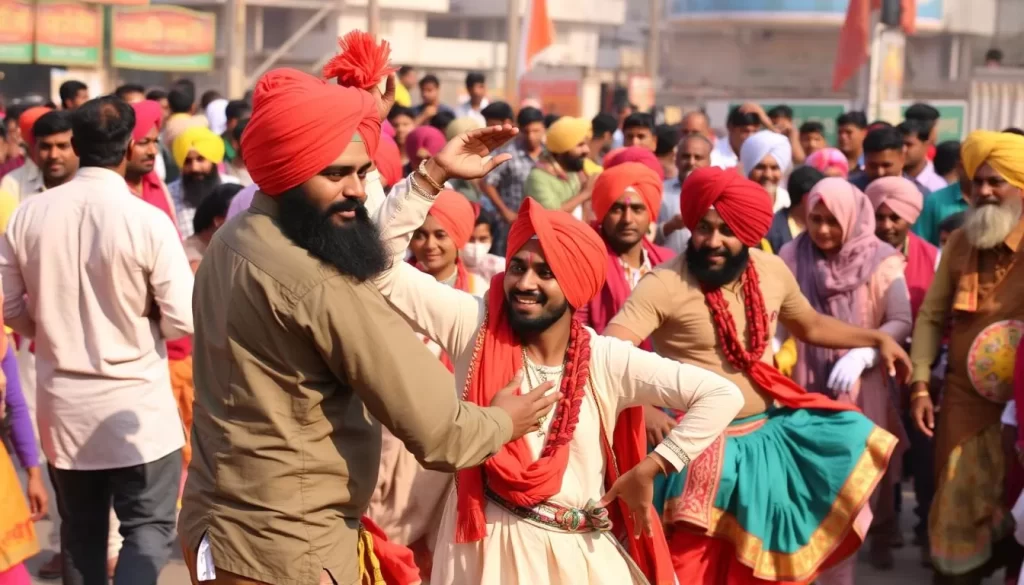
Planning a trip to Punjab during its vibrant festivals requires some practical preparation to ensure a memorable experience. The state’s cultural calendar is filled with celebrations like Lohri, Baisakhi, and Hola Mohalla, which attract visitors from around the world.
Accommodation and Transportation During Festival Season
To avoid last-minute hassles, it’s advisable to book your accommodations well in advance, especially in cities like Amritsar, Ludhiana, and Anandpur Sahib. Consider staying at heritage properties or homestays for a more authentic experience. Transportation during festivals can be challenging, so arrange your travel plans ahead of time or consider hiring a private driver for the duration of your stay.
Etiquette and Cultural Sensitivity
When attending religious festivals, particularly at Gurudwaras, you’ll need to follow specific etiquette, including covering your head, removing shoes, and dressing modestly. Be mindful of gender-specific traditions and approach religious ceremonies with reverence.
Photography and Participation Guidelines
Always ask permission before taking pictures of individuals, especially during religious ceremonies. When participating in activities like langar, follow the lead of locals and respect the traditions. Stay hydrated and protect yourself from the sun during outdoor celebrations.
By being prepared and respectful, you can fully immerse yourself in the festive spirit of Punjab and create unforgettable memories.
What to Buy: Festival Souvenirs and Handicrafts
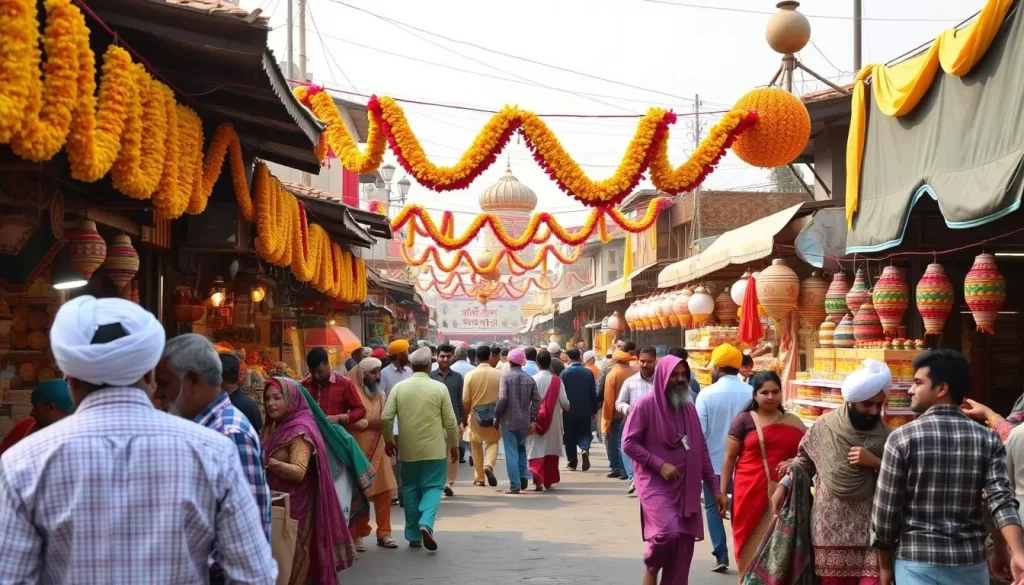
Learn More
As you immerse yourself in Punjab’s festivals, be sure to explore the local markets for authentic handicrafts and souvenirs. The region’s rich cultural heritage is reflected in its traditional clothing, accessories, and artisanal crafts, making for memorable keepsakes.
Traditional Clothing and Accessories
Punjab is renowned for its vibrant traditional attire, including intricately embroidered Punjabi Juttis and beautiful Phulkari embroidered dupattas and shawls. These items are not only stylish but also carry the essence of Punjabi culture.
For women, traditional Punjabi suits with salwar, kameez, and chunni in festive colors are meaningful souvenirs. Men can consider a traditional kurta-pajama or a colorful turban (pagri) as a distinctive souvenir.
Artisanal Crafts and Keepsakes
Beyond clothing, Punjab offers a range of artisanal crafts, including brass and copper utensils, wooden crafts, and decorative items that showcase the region’s metalworking and woodworking traditions.
Food lovers can bring home Punjabi spice blends, locally produced honey, and traditional sweets like pinni. These items capture the flavors of Punjab and make for thoughtful gifts.
Conclusion: Embracing the Spirit of Punjab Through Its Festivals
With Punjab’s festivals, you’re not just a spectator; you’re part of a centuries-old tradition that celebrates life and community. As your trip comes to an end, you’ll take with you memories of vibrant celebrations that showcase the heart and soul of this remarkable region. From the harvest festivities of Baisakhi to the joyous spirit of festivals in Punjab, each experience connects you with the local culture and people, leaving a lasting impression.
The above is subject to change.
Check back often to TRAVEL.COM for the latest travel tips and deals.
